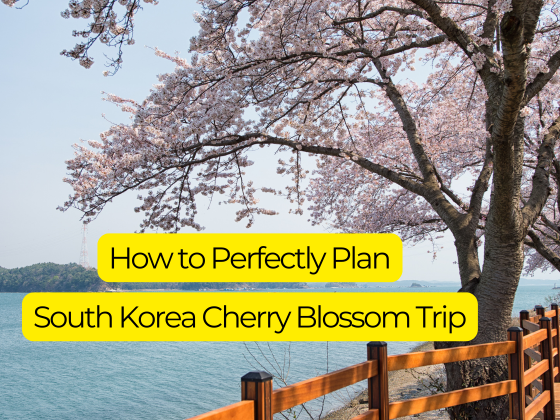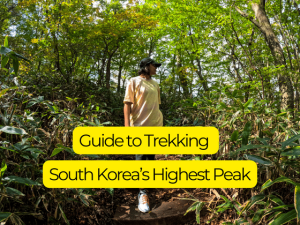
Mt. Hallasan Trekking Guide
Are you up for a challenge in South Korea? No this isn’t a 10-step skincare routine challenge! There’s more to South Korea than skincare and dramas. If you are looking for something beyond that, then you should add Mt. Hallasan to your South Korea bucket list. Mt. Hallasan is one of the best South Korea trails. Let’s find out all about it in my Mt. Hallasan trekking guide.
Mt. Hallasan is the highest mountain in South Korea, standing at 1,950 meters above sea level. It is also a dormant volcano with a stunning crater lake at the top, called Baengnokdam, which means “white deer lake”. Mt. Hallasan is located in the centre of Jeju Island, a UNESCO World Natural Heritage Site, and a popular tourist destination for its scenic beaches, waterfalls, caves, and cultural attractions.
In this Mt. Hallasan trekking guide, I will show you everything you need to know to plan and enjoy a perfect hiking trip to Mt. Hallasan, including the best time to visit, the best Mt. Hallasan trail and some hiking tips to climb Mt. Hallasan.
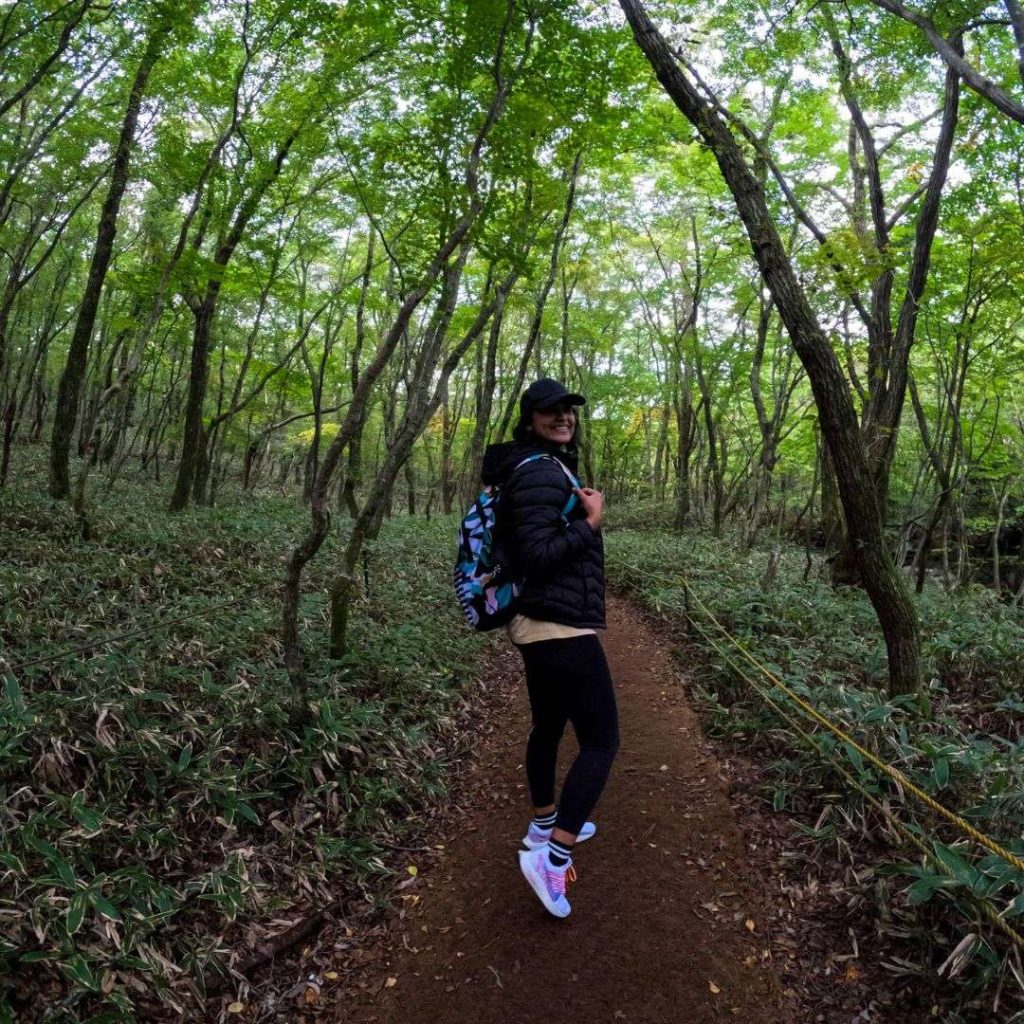
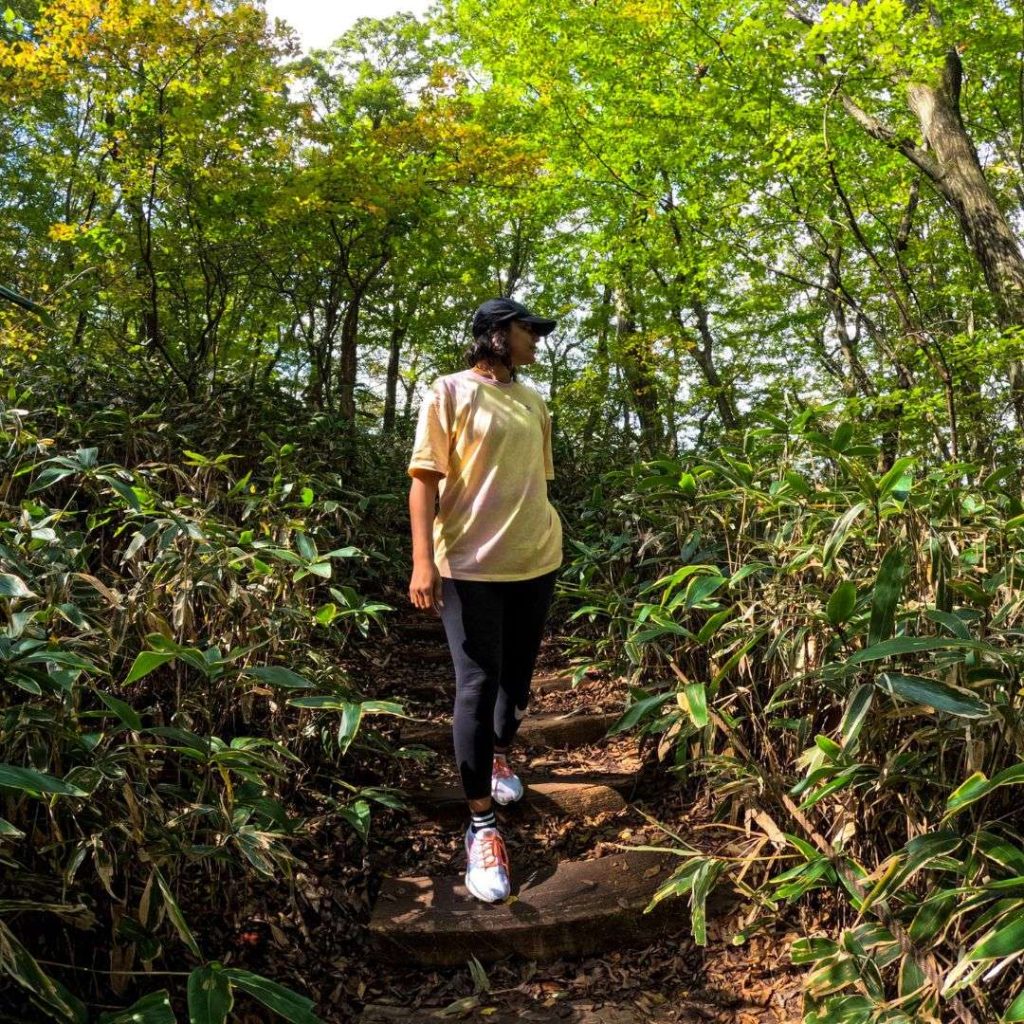
Best Time to Visit Mt. Hallasan
One of the amazing things about climbing Mt. Hallasan is that it offers different scenery in each season. You can hike Mt. Hallasan all year round, but you should be aware of the pros and cons of each season, and choose the best time for you according to your preference and availability.
Spring (March-May)
Spring is a beautiful time to visit Mt. Hallasan, as the weather is mild and pleasant, and the mountain is covered with colourful flowers and fresh greenery. You can see cherry blossoms, azaleas, rhododendrons, and other spring flowers along the trails, and enjoy the fragrance and the breeze. However, spring is also a peak season for tourists, so you may encounter some crowds and queues on the trails and at the summit.
Summer (June-August)
Many tourists climb Mt. Hallasan in the summer. You can see wildflowers, orchids, ferns, and other summer plants along the trails, and enjoy the shade and the coolness. However, summer is also a hot and humid season, so you may feel sweaty and uncomfortable on the trails and at the summit. You may also need to protect yourself from the sun and the insects, as they may be intense and annoying. I’d not recommend attempting to climb Mt. Hallasan during the summer months.
Autumn (September-November)
Autumn is arguably the best time to visit Mt. Hallasan, as the weather is cool and crisp, and the mountain is adorned with fiery colours and golden hues. This is also the time I chose to visit. You can see maple, ginkgo, oak, and other autumn leaves along the trails, and enjoy the contrast and the harmony. If you are flexible with your plans, definitely recommend visiting towards the end of October or early Novemeber as that’s when the fall foliage is spectacular. I ended up visiting mid-October, and the colours were just starting.
Best Trail to Hike Mt. Hallasan
Mt. Hallasan has seven hiking trails, but not all of them lead to the upper crater of the mountain. Only two of them reach the mountain’s summit, where you can see the crater lake and the panoramic views. These two trails are Gwaneumsa and Seongpanak, and they are the most popular and recommended trails for hikers who want to conquer Mt. Hallasan.
In the next section of my Mt. Hallasan trekking guide, I’ll take you through all the Mt.Hallasan trails. They have different levels of difficulty, scenery, and pros and cons, so you should choose the best trail for you based on your fitness level, time availability, and personal preference.
Gwaneumsa Trail
- Distance: Approximately 8.7 kilometres
- Time to Complete: About 9 hours (Round trip)
- Difficulty Level: Strenuous
Starting with the most difficult yet beautiful trail- Gwaneumsa Trail. This trail starts from the Gwaneumsa Temple and is one of the two trails that reaches Mt. Hallasan the summit. The strenuous difficulty level involves steep and rocky terrain, including sections that require climbing steep stairs. As the most beautiful and diverse trail, it showcases lava-rock rivers, ravines, cliffs, and a crater lake. Expect fewer hikers, providing a quieter and more intimate experience. However, be prepared for a high level of physical and mental effort when climbing this trail.
You’ll have to register yourself to climb the trail, this is done to ensure control on how many people visit and the general safety.
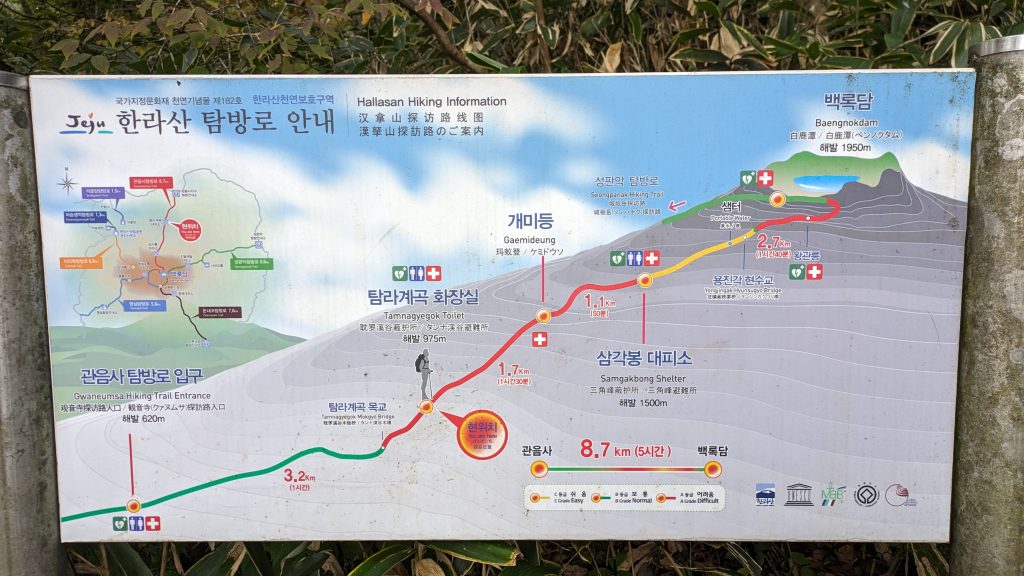
Seongpanak Trail
- Distance: Approximately 9.6 kilometres
- Time to Complete: About 10 hours (Round trip)
- Difficulty Level: Difficult
Next up is Seongpanak Trail, another one which takes you to Mt. Hallasan summit. Originating from the Seongpanak Visitor Center offers a longer but easier route to the summit as compared to the Gwanesuma trail. With a moderate difficulty level, the trail features a gradual incline and wooden stairs in some sections. Providing scenic views of the forest, meadow, and the crater lake. If you wish to see the crater and are confused, the Seongpanak Trail is the safest and most reliable option when planning a Mt. Hallasan trek.
To take on the trail, it is important to register yourself first. While the registration is free of cost, if you do not show up you are barred from hiking the trail for a considerable amount of time.
Eorimok Trail
- Distance: Approximately 6.8 kilometers
- Time to Complete: About 6 hours (Round trip)
- Difficulty Level: Moderate
Eorimok Trail, starting near the Eorimok Visitor Center, offers a well-balanced mix of challenges and scenic beauty. The moderate difficulty level makes it suitable for hikers with varying experience levels. Expect occasional steep sections that add a touch of adventure without being overly strenuous. You’ll not be able to reach the Mt. Hallasan summit but view it from a distance.
Yeongsil Trail
- Distance: Approximately 6 kilometres
- Time to Complete: About 5 hours (Round trip)
- Difficulty Level: Moderate
Yeongsil Trail starts near the Yeongsil Rest Area. It stands out to be one of the long trails that is also decently challenging for beginner hikers. If you are not keen on visiting the summit and looking for something that’s a balanced hike to Mt. Hallasan go for the Yeongsil trail.
Donnaeko Trail
- Distance: Approximately 7 kilometres
- Time to Complete: About 6 hours (Round trip)
- Difficulty Level: Easy to Moderate
Donnaeko Trail starts near Donnaeko entrance and caters to those seeking solitude and untouched natural beauty. Often overlooked amongst the other trails, this would probably be the least crowded of the long trails to Mt. Hallasan.
Eoseungsaengak Trail
- Distance: Approximately 1.3 kilometres
- Time to Complete: About 1 hour
- Difficulty Level: Easy
Eoseungsaengak Trail is the shortest of the 7 hiking trails of Mt. Hallasan. If you are looking for a leisure hike, this one is perfect for you. Most of the guided tours to Mt. Hallasan in Jeju take visitors on this trail. Once you visit the Eoseungtaeng Oreum you get to view the summit through binoculars.
Seokgulam Trail
- Distance: Approximately 1.5 kilometres
- Time to Complete: About 2 hours
- Difficulty Level: Easy
Seokgulam Trail, commencing near the Seokguram Grotto. This is another one of the short leisure hikes on Mt. Hallasan. Often frequented by locals for their daily walks. Seokgulam trail is a great choice if you are pressed for time or are looking for a light hike.
Best Trail Combination
If you want to experience the best of both worlds, you can choose to hike a combination of Gwaneumsa and Seongpanak trails, instead of hiking the same trail up and down. This way, you can enjoy the different sceneries and difficulties of each trail, and make your hike more fun and memorable.
The best trail combination to hike Mt. Hallasan is to hike Seongpanak Trail up and Gwaneumsa Trail down:
- Seongpanak Trail is easier and faster to go up, so you can save your energy and time for the summit and the descent.
- Gwaneumsa Trail is more scenic and rewarding to go down, so you can appreciate the views and the features more on the way back.
- Seongpanak Trail is more crowded and noisy to go down, so you can avoid the congestion and the disturbance on the way back.
- Gwaneumsa Trail is more difficult and dangerous to go up so you can reduce the risk and the effort on the way back.
The second best option is to hike Gwaneumsa Trail up and down if you are looking for a more challenging and adventurous hike:
- Gwaneumsa Trail is more scenic and diverse to go up and down, so you can enjoy the variety and the beauty of the trail more.
- Gwaneumsa Trail is more challenging and rewarding to go up and down, so you can feel the accomplishment and the satisfaction of the hike more.
- Gwaneumsa Trail is less crowded and quieter to go up and down, so you can have more space and peace on the trail more.
The least recommended option is to hike Seongpanak Trail up and down if you are looking for a more easy and comfortable hike:
- Seongpanak Trail is less scenic and diverse to go up and down, so you may miss out on the variety and the beauty of the trail.
- Seongpanak Trail is less challenging and rewarding to go up and down, so you may not feel the accomplishment and the satisfaction of the hike.
- Seongpanak Trail is more crowded and noisy to go up and down, so you may have less space and peace on the trail.
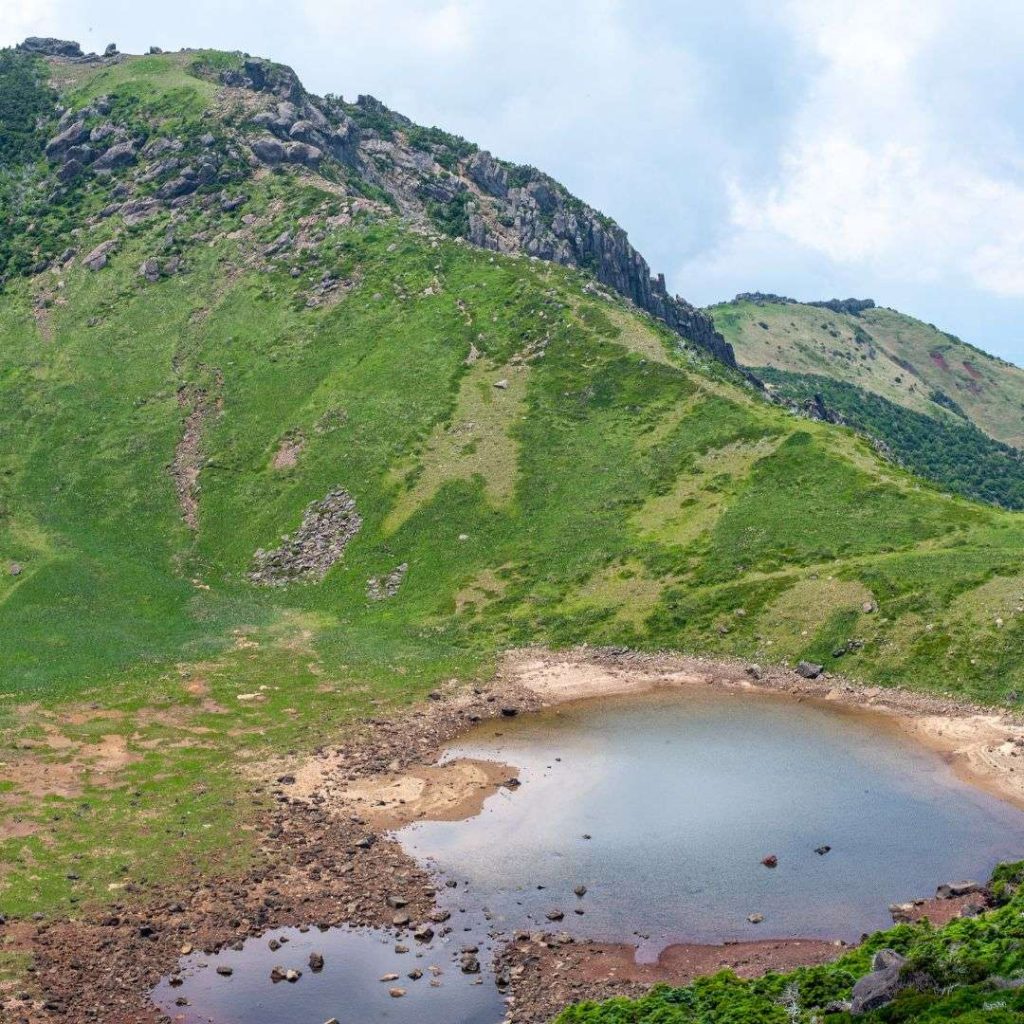
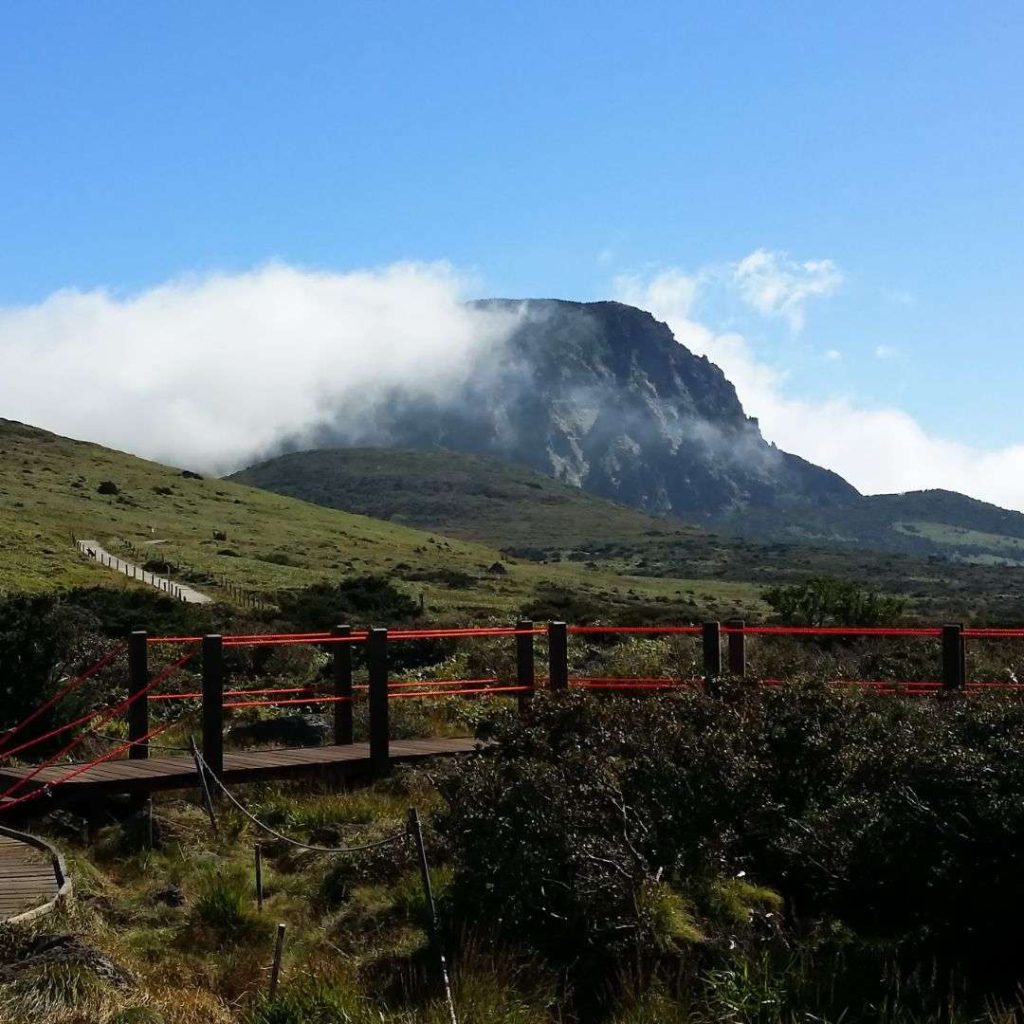
What time of day should I start Mt. Hallasan trekking?
When climbing Mt. Hallasan’s longer routes like Gwanesuma Trail, Seongpanak Trail or Eorimok Trail, consider kickstarting your day at 8:00 AM. If you do end up going for the longer trail try to keep enough time in your Jeju island itinerary.
The shorter trails like Eoseungsaengak Trail and Seokgulam Trail, are a breeze. Taking only about 1 hour or 2 hours, respectively. That means you can choose to embark on your hike in the morning or afternoon, and still have enough time to visit other attractions during the day.
Just a heads-up, though—most guided tours swing by Eoseungsaengak Trail in the afternoon, usually around 3:30 pm. So, you plan your hike earlier/later to avoid the crowd.
FAQs on Mt. Hallasan Trekking
Are there guided tours available for Mt. Hallasan?
Yes, guided tours are available for Mt. Hallasan. These tours take on the short Eoseungsaengak Trail with a small group. I do recommend booking them here.
What is the elevation of Mt. Hallasan?
The elevation of Mt. Hallasan is approximately 1,947 meters (6,388 feet) above sea level, making it the highest peak in South Korea.
Can I hike Mt. Hallasan without a guide?
Yes, you can hike Mt. Hallasan without a guide. The trails are well-marked, and the mountain is accessible to independent hikers.
Are there any entrance fees for Mt. Hallasan?
There is no entrance fee, however if you are hiking by yourself you must register for the longer routes.
Planning a visit to South Korea? You may also like to read:
A Guide to Gamcheon Culture Village in Busan
Best Places in Jeju Island for a 4 day Itinerary
Fall Foliage in South Korea, Your Guide to the Best Autumn Hikes and Views

